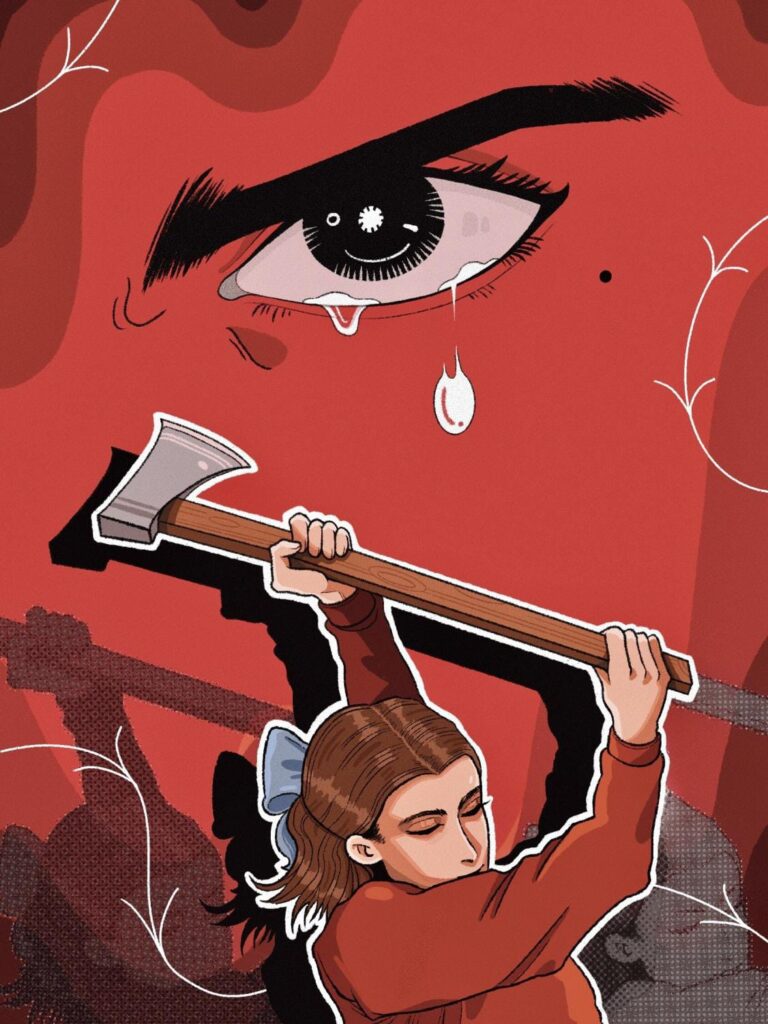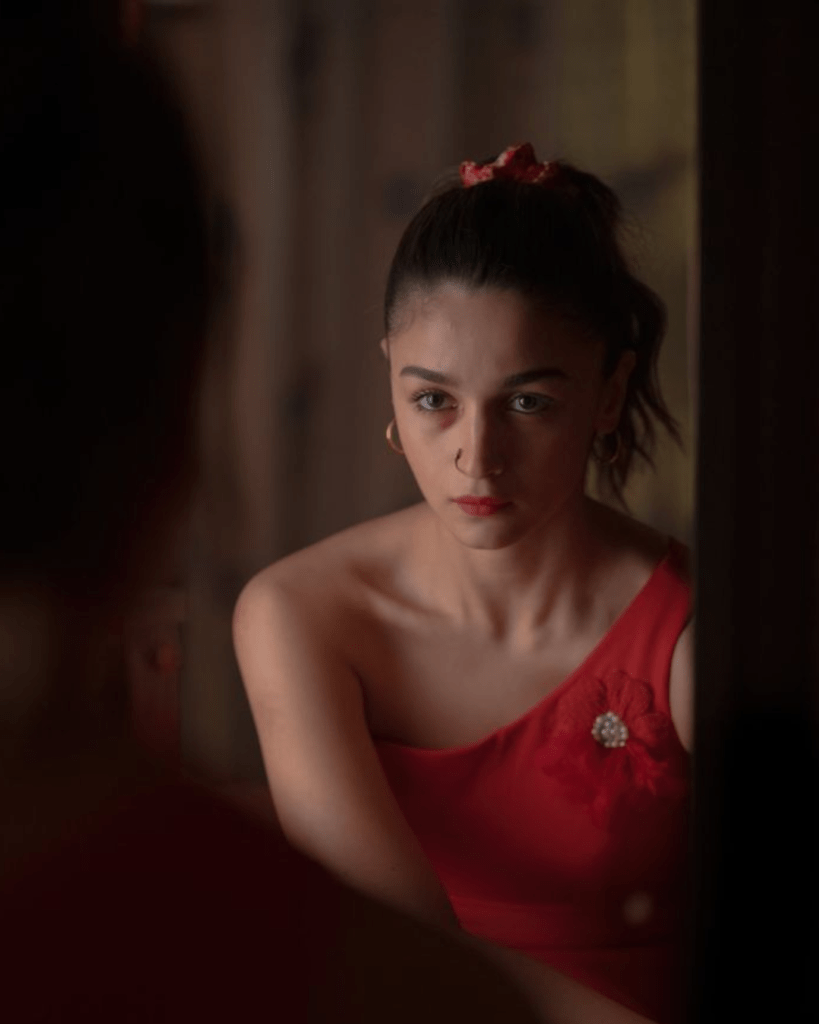Is Media Diluting Women's Real Rage?
Have you ever seen a lady in a saree with long, flowing hair, anger on her face and fierce eyes while her dress/dupatta/pallu is flowing behind her? Not to mention white curtains in the room giving the perfect dramatic touch to her agitated self. Well, yeah, that’s a woman in the media for you—a woman breaking the chains and finally portraying her basic negative emotion: anger. She’s angry—and she looks fantastic.
From dramatic television serials to fiery Instagram reels, female anger has become strangely glamorous. It’s everywhere, and it’s louder than ever. But as more and more women are shown expressing rage in the media, a strange question arises: Are we finally listening to what women are angry about, or are we just admiring how good they look while yelling?
From silence to spotlight
For decades, India’s mainstream media has portrayed women’s emotions– especially anger, in a binary way. Either they are shown as patient, forgiving or the loud, irrational and extreme villains. There was never anything in between. There was no space for complexity. This emotion coming from a woman? Not at all acceptable! It was mocked, made fun of, silenced or simply dismissed.
If a woman got angry, it was hormonal, emotional or “crazy”. Remember the screaming mother-in-law trope? Or the angry woman who has to be “tamed” by the male hero? Yeah, this is what we are seeing. These portrayals normalized the idea that female anger was unnatural or destructive.
But now, we’re in the age of transformation. Female rage has gone from being something to suppress to something to celebrate. Angry women are being shown not as villains but as heroines. They fight back, call out injustice, walk out of toxic relationships, and deliver scathing monologues about patriarchy. It feels powerful. It feels necessary. But—and there’s always a “but”—is it entirely authentic?

Anger, but Make It Pretty

There is a new template in place. The irate woman is no longer yelling in the kitchen. She’s standing in front of a mirror, nicely groomed, and expressing her wrath with elegance and grace. Her rage is refined, prepared, and visually spectacular, whether in films, television shows, or internet material.
Consider viral Instagram clips in which influencers speak out against societal norms while dressed in lavish sarees with dramatic transitions. Or primetime TV dramas in which the female protagonist exacts retribution but her lipstick never smudges. Rage has evolved into a performance, product, and even a marketing strategy.
In many ways, this aestheticization of rage is comforting for audiences. It lets us engage with powerful emotions without feeling uncomfortable. It tells us: here is a strong woman, and look how good she looks while being angry. It’s cinematic, curated, and clickable.
But here lies the contradiction: when female rage becomes too beautiful, it risks becoming meaningless.
What are we forgetting?
Real anger– which is born out of injustice is not glamorous. It’s messy and raw. Often silent. An emotion which she keeps bottled inside her for so long. An emotion which is tearing her world apart in a way. An emotion which makes her vulnerable. It’s the woman who stays up at night worrying about safety on the streets. It’s the girl who gets catcalled and is told to “ignore it.” It’s the domestic worker fighting for fair pay. It’s the student dealing with casual sexism in classrooms. These stories don’t come with dramatic makeup or dramatic background music.
When the media turns women’s rage into a stylized aesthetic, is when a problem arises. It can distract the audience from the actual issue. We start to admire the look rather than the reason behind the look. The message gets lost in the medium.
This is especially visible on social media, where aesthetics rule. There’s nothing wrong with looking good—style can be powerful, too. But the problem begins when the content becomes more about the presentation than the protest. The visuals overpower the voice.
The Trendification of Rage
We currently live in a time where anything may become a trend, including opposition. The difficulty with turning female wrath into a trend is that fads have a short lifespan. They’re designed to be swiftly absorbed, reacted to, and skimmed through. Real problems, on the other hand, need sustained attention and difficult talks.
If rage is reduced to just another type of content, it loses its significance. It shifts away from injustice and towards virality. We celebrate when a female character tosses a glass of water in court, but we don’t consider the real-life problems that women face in the judicial system. We upload a video on shattering gender stereotypes but overlook a news story about crimes against women.
Trendy fury feels wonderful. But true wrath necessitates action.
Media’s Responsibility
We are not saying that the media should stop showing angry women. In fact, we need more of them in today’s age. But we need them to be human, to be natural, not perfect. Let them cry, break down, look tired, feel confused. Let them be messy. Because real rage isn’t airbrushed.
Media creators—whether filmmakers, influencers, or advertisers—must ask: Are we using anger to make a point, or just to make a scene? Are we empowering our audience, or just entertaining them? If the focus stays on the woman’s eyeshadow rather than her experiences, we’re missing the point.
In short, what we need is authentication.
Towards Authentic Empowerment
Empowerment doesn’t need to be always visually pleasing. It looks like protests in the scorching sun. Like a woman speaking up at the risk of losing her job. Like someone walking away with nothing but dignity. It looks like survivors telling their stories often without glamour, without applause.
True representation should reflect that reality. We need narratives that explore the why behind women’s anger. Not just revenge plots, but the quiet rage of everyday injustice. Not just viral monologues, but systemic critique. Not just stylish symbolism, but actual substance.
Let women be angry. But let them be real.
To sum it up
Seeing women express anger is undeniably powerful. It’s a sign that we are breaking free from age-old moulds and norms. We are now making space for emotional truth. But as with all power, there’s a risk of misuse. If we turn rage into a costume, a filter, or a mood board, we strip it of its depth.
We must ask real questions: why is she angry? Are we paying attention to that? Or are we just simply enjoying the performance? Are we using female rage to bring a change or we are just using it for clicks, views and likes?
Rage doesn’t need a ring light. It needs a reason—and an audience that doesn’t just watch but listens. That’s where real empowerment begins.
Thanks for reading, fr! Share if you like it enough. Follow us on Instagram & LinkedIn for more.


